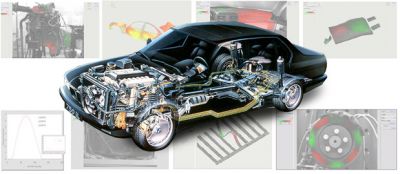Vibration is a daily occurrence in a vast range of machinery, not to
mention in buildings and infrastructures as well. The phenomenon causes
wear and tear and often leads to equipment or structural failure. But
can it be prevented? The WIBRATE partners certainly think so, provided
that vibration characteristics are monitored and their underlying causes
are understood.
WIBRATE engineers have come up with an innovative new technology to
detect and analyse vibrations in a wide range of applications. It
consists of a self-powered, wireless vibration control and monitoring
platform that can be fitted to trains, civil engineering structures,
energy installations such as petrochemical plants, and factory-floor
machinery, in a matter of minutes. What’s more, the technology promises
to reduce dramatically the cost of maintenance and accidents in many of
our day-to-day activities.
WIBRATE is a three-year, EUR 2.85 million FP7 project which
developed and tested these detectors. Powered solely by energy harvested
from the vibrations themselves, the sensor system is the brainchild of a
consortium of European SMEs and research centres, led by the University
of Twente in the Netherlands. Less than two years into the project and
the WIBRATE consortium has been rewarded with one of its first
industrial contracts for the sensor system, from Southeastern Railways
in the United Kingdom; this has allowed to further enhance the prototype
and convert it into a product.
Cutting down disruption for rail travellers
Southeastern Railways installed the sensors on a number of its
trains and found they worked impressively by delivering significant
reductions in operational and maintenance costs, as well as improving
safety in helping identify premature failures. Now Southeastern says it
optimises the use of its assets better, as well as reducing service
disruptions for passengers.
The sensor systems monitor wear and tear of bearings, wheels and
axles on trains, and their use could also be extended to train tracks,
say the project partners. Since they are wireless and self-powered, the
sensors can be fitted quickly without the need for complex retrofit
wiring or batteries. The smart sensors collect vibration data while a
train is in motion. Software algorithms on the smart sensors look for
signs of wear and send their detections wirelessly to the central
database. The train operators get real-time information on the health
status of the trains.
‘The technology has attracted attention from European train
operators in a number of countries including Sweden, Italy, Spain,
Ireland and Germany,’ said project coordinator Prof Paul Havinga, of the
University of Twente. Other partners in WIBRATE are the Swiss
university Universita Della Svizzera Italiana, Fiat’s research centre in
Italy, IT giant Honeywell (India), mechatronics leader LMS
International (Belgium), and the project’s SMEs: Inertia Technology (The
Netherlands) and Perpetuum (UK), winner of the Southeastern contract.
Huge monitoring and control market
The technology appears to have a breathtaking range of applications.
‘Imagine for example a factory where machines are equipped with
intelligent sensors that detect impending failures by monitoring
vibrations,’ explained Prof Havinga. ‘The sensors can be installed with
minimum effort and cost. They create an ad-hoc intelligent network that
can supervise the machinery on a continuous basis and eliminating the
labour-intensive process of periodic monitoring.’
The project partners are moving fast to take their results to the
global monitoring and control market, which is a surprisingly big
economic concern, representing 750,000 jobs in the EU. By 2020,
monitoring and control revenues are
forecast to grow to €143 billion , twice the amount mobile phones bring in.
Link to project on CORDIS:
–
FP7 on CORDIS
Link to project's website:
–
WIBRATE website
Link to related video:
-
Video
Other links:
–
European Commission's Digital Agenda website
